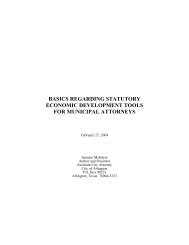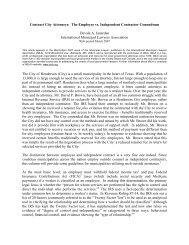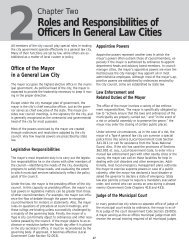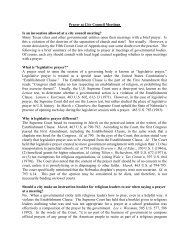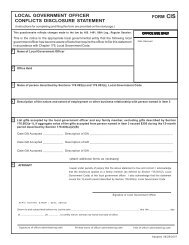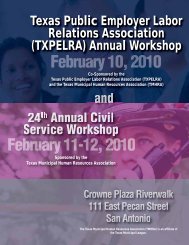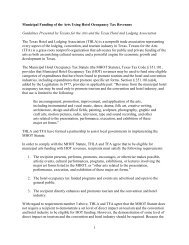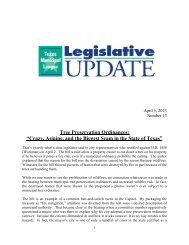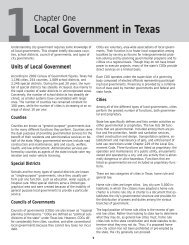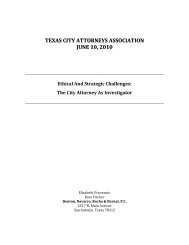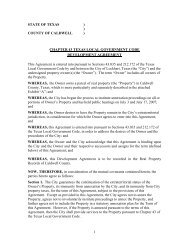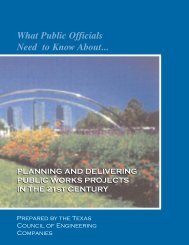Center for Responsible Lending Car Title Loans Report
Center for Responsible Lending Car Title Loans Report
Center for Responsible Lending Car Title Loans Report
You also want an ePaper? Increase the reach of your titles
YUMPU automatically turns print PDFs into web optimized ePapers that Google loves.
BORROWER STORIESWhether structuredas single-payment30-day loans that requiremultiple renewalsor as longer-term,high-cost installmentloans, car-title loanscreate a long-termcycle of debt. Theseborrowers highlightthe long-term costof these loans:Jeffrey Simmons, 56, ofGlendale, Arizona, took out a$2,000 title loan with 156% APRto pay <strong>for</strong> repairs after his carbroke down so he could travel tohis dialysis appointments threetimes a week. Living off of a fixedincome of $1,300 in monthlydisability payments, he paid onlyinterest on the loan <strong>for</strong> the firstfive months. When the balancewas due in the sixth month, herefinanced. Of his current monthly$308 car-title payment, only $28goes to principal. His car continuesto break down, and he takes abus to his dialysis appointments.Simmons advises, “Try to stayaway from them. You will neverpay that stuff back” (Brodeskyand O’Dell, 2013).James Haga of Marion, Virginiatook out a $1,600 300% APR titleloan on his truck. Ultimately, thelender repossessed his truck—worth $13,000—after havingcollected $4,500 (nearly threetimes the amount borrowed) inpayments (Kirchhoff, 2006).After repaying the principal due on the “free” loan, a typicalborrower has $955 remaining to pay $1,942 in essential expenditures,leaving a deficit of $987. The situation is worse <strong>for</strong>borrowers who pay the fee of $261,8 who end up with a deficitof $1,248. Many borrowers have other expenses not includedin the chart above—such as child care, clothing, other debtobligations, and the like—and face even greater difficulty inrepaying the loan.<strong>Car</strong>-title loans are structured to be unaf<strong>for</strong>dable. The onlyway most borrowers can meet the obligations of the 30-dayballoon payment while meeting their other monthly expensesis either to pay only the fee and extend the loan or to take outa new loan shortly after repaying the old one. Many borrowersremain indebted until they default or receive an atypical cashinfusion—such as a tax refund—that allows them to finally payoff the balance.<strong>Title</strong>Max data highlight this cycle of repeat borrowing, with a30-day loan being “typically renewed eight (8) times,” accordingto a deposition of the <strong>for</strong>mer CEO (Robinson III, 2009).Nine monthly loans per year (one loan plus eight renewals)puts the typical borrower in expensive, high-cost auto titledebt three-quarters of the year. Figure 3 highlights the averagecost of taking nine loans per year <strong>for</strong> the average loan sizeof $1,042.9Borrowers who take out the typical nine title loans in a yearpay back over three times the amount borrowed: $3,391 inpayments <strong>for</strong> a $1,042 loan. This is the case even thoughthey use a car typically worth more than $4,000—wellover three times the loan amount—<strong>for</strong> collateral.Figure 3: Total Borrower Cost of a Typical 30-Day <strong>Car</strong>-<strong>Title</strong> LoanAverage principal borrowed (see Appendix 1) $1,042Fee <strong>for</strong> first loan ($1,042*25%) $2618 additional renewal fees ($261*8) $2,088Total fees paid $2,349Total amount paid in principal and fees <strong>for</strong> a$1,042 loan $3,391Average car value * $4,008* Average car value assumes a 26% loan-to-value ratio (the median in the CRL/CFA data set).8 Based on the typical fee of $25/$100 borrowed.9 See Appendix 1 <strong>for</strong> the average loan size calculation.122The State of <strong>Lending</strong> in America and its Impact on U.S. Households



